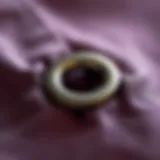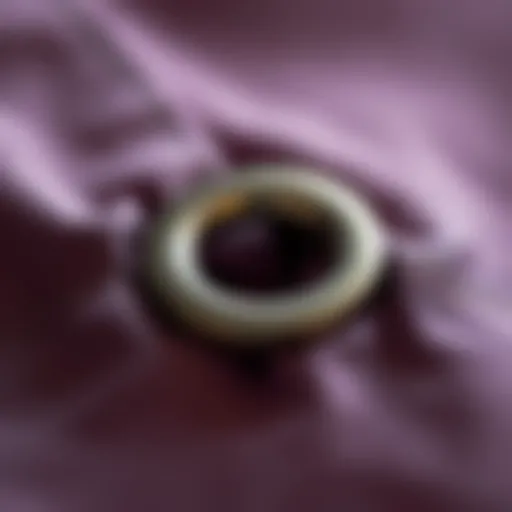Comprehensive Guide to Letter Iron-Ons for Fashion
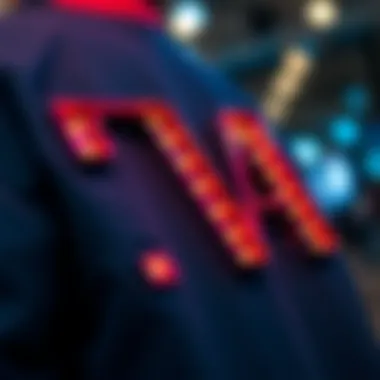

Intro
The world of fashion is a dynamic playground where individuality and creativity thrive. One popular method to express personal style is through letter iron-ons. These charming little patches not only enhance clothing but also offer a canvas for self-expression. Imagine transforming a plain tee into a statement piece that reflects your personality or values. This guide aims to unravel the layers of letter iron-ons—covering everything from the various types available to application techniques, care for your fabrics, and outfit pairing strategies.
Fabric Knowledge
Understanding fabrics is pivotal when it comes to applying letter iron-ons effectively. The type of fabric can significantly influence both the application process and the final look. Fashion enthusiasts must be well-versed in the various fabrics to ensure their iron-ons adhere perfectly and last long.
Types of Fabrics
Different fabrics interact with heat and adhesive differently. Here’s a concise look at common fabric types used with iron-ons:
- Cotton: This versatile fabric is typically strong and adheres well to iron-ons. A must-have in every closet, especially for casual wear.
- Polyester: Offers good durability and resistance to shrinking. Ideal for sportswear and can often tolerate higher heat.
- Denim: A thicker fabric that provides a solid backdrop for letter patches. It requires appropriate heat settings to prevent scorching.
- Blends: Fabrics blended with cotton or polyester can also be compatible, but knowing the primary fabric helps determine the heat application.
How to Care for Different Fabrics
Once you’ve adorned your clothing with custom letter iron-ons, maintaining their appearance is crucial. Each fabric has its care requirements:
- Cotton: Usually machine washable in cold water. Avoid bleach to preserve print quality.
- Polyester: Wash in a gentle cycle with similar colors. High temperatures can lead to discoloration, so opt for lower settings when ironing.
- Denim: Turn inside out before washing to protect the iron-on. Washing in cold water helps maintain the color and shape of the patch.
- Blends: Read labels carefully; care instructions often vary based on the main fabric.
Style Tips
Once your garment is properly adorned, the next step is considering how to style it. Transforming your attire with letter iron-ons can lead to a myriad of outfit choices.
Outfit Pairing Strategies
Here are a few outfit pairing strategies to make the most of your letter iron-on creations:
- Casual Vibes: A simple white tee with bold letters can be paired with ripped jeans and sneakers for a relaxed day out.
- Chic Layering: Layer a letter-iron-on adorned denim jacket over a flowy dress for a cool contrast.
- Athleisure: Use letter patches on workout leggings or a gym bag to give your workout attire some flair.
Seasonal Fashion Trends
Fashion constantly evolves, and understanding current trends can enhance the appeal of your personalized clothing.
- Spring: Floral motifs paired with soft letters can create a fresh, spring-inspired look.
- Summer: Bright colors and playful fonts can give you a lively summer vibe.
- Fall and Winter: Warmer tones and thicker fabrics can be accented with bolder letters, perfect for layering outfits.
By embracing letter iron-ons, you open a door to endless possibilities in customization and style. Understanding fabrics and how to pair them with current trends allows you to turn heads wherever you go.
Prolusion to Letter Iron-Ons
In today’s fashion landscape, where individuality takes center stage, letter iron-ons have made a significant mark as a popular form of customization. They stand out not only for their aesthetic appeal but also for their capacity to convey personal messages, team spirit, or simply a unique fashion choice. This guide aims to navigate you through the intricate world of letter iron-ons, detailing their types, applications, and the techniques needed to make them a standout feature in your wardrobe.
Definition and Purpose
Letter iron-ons are decorative transfers that use heat to apply letters or designs onto fabric. They enable individuals to express creativity or personalize items without the need for advanced crafting skills. In addition to their widespread use in the fashion industry, these embellishments find a home in sports apparel, merchandise, and even creative DIY projects. The ease of application alongside the potential for significant visual impact makes letter iron-ons a favored choice.
For those looking to enhance their clothing or create unique branded merchandise, the purpose of these iron-ons is straightforward: they add a personal touch while allowing for a degree of individuality that mass-produced clothing cannot offer. As such, they appeal to both the casual wearer and the fashion-forward individual.
Historical Overview
Tracing back to the early days of garment customization, iron-on letters find their roots in the realms of sports and military uniforms. The initial inception of iron-on technology can be attributed to traditional methods of embroidery and patches, aiming to simplify the process of personalizing one’s attire.
Through the late 20th century, as DIY culture surged, letter iron-ons began to gain prominence in the 1980s and 90s—think of those neon colors and bold fonts splashed across T-shirts at community events or birthday parties. With the increase in accessibility to technology and materials, they evolved from a niche product to a staple in casual and artistic apparel.
Fast forward to today, and they have garnered attention from both budding designers and established brands. The rise of social media has further fueled this trend, with platforms like Instagram showcasing infinite ways to incorporate letter iron-ons into everyday wear, making them a canvas for artistic expression and personalization. From local craft fairs to large-scale fashion shows, the journey of letter iron-ons reflects the evolution of fashion itself—always adaptable, always personal.
Types of Letter Iron-Ons
When it comes to personalizing garments, understanding the different types of letter iron-ons is crucial for anyone who wants to make their mark in fashion. Each type comes with its own set of characteristics that contribute not only to the aesthetic appeal but also to the wearability and durability of the final product. Recognizing these distinctions helps in making informed choices based on personal needs or particular project requirements. Below, we will take a closer look at three popular types of letter iron-ons: Vinyl, Flock, and Embossed/3D iron-ons.
Vinyl Iron-Ons
Vinyl iron-ons are, without a doubt, the front runners in the sneaker world of customization. These are made from heat-activated vinyl material, which means they adhere to the fabric when exposed to heat. The end result is sharp, vibrant colors that can elevate any basic tee into a stunning statement piece. One of the standout features of vinyl is its versatility. You can easily cut intricate designs or letters using a cutting machine, allowing for personalized creations that can fit any theme or occasion.
Benefits of using vinyl iron-ons include:
- Wide array of colors and finishes: Matte, glossy, or even metallic finishes open up creative avenues.
- Easy application: Using just a heat press or an iron, you can achieve professional results without breaking a sweat.
- Durability: These iron-ons can withstand multiple washes without losing their luster, as long as proper care instructions are followed.
However, it’s worth noting that vinyl iron-ons may not be the best choice for fabrics that are stretchy or delicate. The stiffness of the vinyl can sometimes inhibit the natural movement of the fabric it’s applied to, leading to discomfort.
Flock Iron-Ons
Flock iron-ons bring a whole different texture into the mix. These are made from a soft, fuzzy material that resembles suede, giving off an air of sophistication. If you’re looking for a unique tactile experience, flock iron-ons might just be your best bet. They can offer a cozy, plush feel, making them ideal for casual wear and softer garments.
Key points about flock iron-ons include:
- Texture: The raised fibers provide a three-dimensional feel that can make letters pop.
- Aesthetic Appeal: This texture can add depth to simple designs, making them visually striking on sweaters, hats, or bags.
- Comfort: Due to their soft nature, these iron-ons typically adhere well to various types of fabric without causing discomfort.
Flock iron-ons do come with their own challenges, though. They might not be as color-fast as vinyl, so washing them demands a bit more caution; sticking to cold wash cycles and air-drying is often recommended to maintain their lovely texture.
Embossed/3D Iron-Ons
Embossed or 3D iron-ons take customization to an entirely new level. These feature raised elements that create a stunning three-dimensional effect, making letters and designs literally stand out. Often crafted from a rubber-like material, they’re perfect for making strong visual statements. Whether you are aiming for a sportier look or something significantly more extravagant, these iron-ons deliver.
Reasons to consider embossed/3D iron-ons include:
- Impact: The visual flair can add both personality and a modern twist to any garment.
- Durability: Typically tough and resilient, these can survive the rigors of everyday wear while still looking fresh.
- Unique Designs: The raised features provide opportunities for creative expressions that vinyl and flock may not be able to capture.
However, with great appeal comes some responsibility. They can be slightly heavier than other options, which might affect how to garment drapes. Additionally, they require careful application, as too much heat can distort these delicate features.
In summary, choosing the right type of letter iron-on involves weighing their individual strengths and weaknesses in relation to your specific needs and desired outcomes. Whether one opts for the sleekness of vinyl, the texture of flock, or the boldness of embossed designs, the world of letter iron-ons offers something for every fashion-forward thinker.
Choosing the Right Material
Choosing the right material for letter iron-ons is crucial in achieving a stunning and lasting look. This decision impacts not only the aesthetics but also the performance and durability of the application. A well-made iron-on can elevate a simple outfit or make a statement piece even more eye-catching. Conversely, using incompatible materials might lead to peeling, fading, or a lack-luster finish. Therefore, understanding fabric compatibility and durability considerations becomes vital for anyone looking to enhance their wardrobe with letter iron-ons.
Fabric Compatibility
The first step in selecting materials for your letter iron-ons revolves around fabric compatibility. Not all fabrics play nice with iron-ons, and the wrong matchup can lead to less-than-desirable results. For instance, cotton fabrics tend to be a safe bet, as they hold iron-ons wonderfully when the right heat and pressure are applied. On the other hand, polyester blends can be tricky; while they look great, too high of a temperature can cause burns or melting. To get a grip on this:
- Test First: If possible, do a small test on a scrap piece of the fabric to see if the iron-on adheres properly.
- Understand Your Materials: Knowledge about the fabric's heat tolerance ratings can save you from making costly mistakes.
- Consider Texture: Smooth surfaces work best for iron-on applications. Fuzzy or textured fabrics might lead to uneven adherence and could compromise the design.
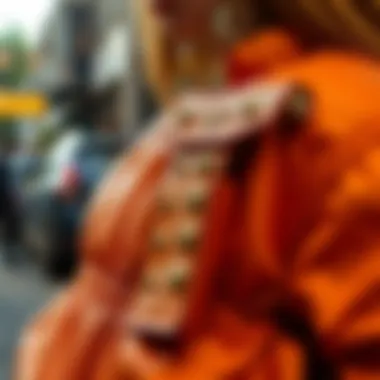

By keeping these factors in mind, you can choose fabrics that enhance your iron-on experience.
Durability Considerations
Next, we have durability considerations. The longevity of your letter iron-ons largely depends on the materials involved, both in the design of the iron-on and the fabric it’s applied to. It's paramount to think about how the item will be used, including washing and wearing frequency. For example:
- High-Use Items: If you're customizing something that's worn often, like a favorite tee, select high-quality materials for both the iron-on and the fabric. Look for those marked as washable, and keep an eye out for heavier-weight vinyl options which can withstand multiple washes without peeling.
- Washing Methods: Cold washes and air drying are preferable. Some materials may not hold up well in dryers, so always err on the side of caution, especially for those quirky designs that you pour your heart into.
- Storage: Consider how you'll store your items. Iron-ons will last longer if kept away from excessive heat and humidity, as these factors can deteriorate adhesion over time.
In short, knowing what fabrics work best in combination with your chosen iron-ons can go a long way toward ensuring a flawless, long-lasting result. By focusing on both fabric compatibility and durability, you’ll be better equipped to tackle your customization projects with confidence.
"Remember, the right materials set the stage for art. Choose wisely, and your creations will stand the test of time."
For more insights regarding fabric compatibility, refer to Wikipedia on Fabric Types.
Application Techniques
Effective application techniques are crucial when it comes to letter iron-ons. They not only determine how well the letters adhere to the fabric but also affect the overall longevity and appearance of the design. If executed correctly, these techniques can transform an ordinary piece of clothing into a unique expression of personal style.
Tools Required
Before diving into the application process, it is essential to gather the right tools. Here’s what you’ll need:
- Iron: A good quality, preferably steam iron. Ensure it has a flat surface for even heat distribution.
- Ironing Board: A sturdy board is necessary for pressing the fabric flat.
- Parchment Paper or Teflon Sheet: These protect your design from direct heat while preventing damage to both the iron and the fabric.
- Scissors: For trimming any excess material from the letter iron-on designs.
- Ruler or Measuring Tape: To help place your letters accurately.
- Pressing Cloth: Sometimes recommended to ensure even heat application, especially for delicate fabrics.
- Heat Press (optional): For those looking to invest, a heat press machine provides precise heat and pressure, making the process a breeze.
Using the right tools not only saves time but can also spare you from a few potential mishaps during the process.
Step-by-Step Application Process
Successfully applying letter iron-ons involves a systematic approach. Here’s a detailed guide to walk you through the process:
- Prepare Your Fabric: Start by washing and drying your fabric to remove any finishes that might interfere with adhesion. Iron it to eliminate wrinkles, ensuring smooth application.
- Position the Letter Iron-Ons: Lay out your letters on the fabric without removing the backing paper. Use a ruler to ensure they are centered or spaced equally if you’re using multiple letters. Adjust them until you’re satisfied with how they look.
- Preheat the Iron: Set your iron to the appropriate temperature for the type of fabric you are using. It's often recommended to use the cotton setting for most fabrics, but always refer to the instructions on your iron-ons.
- Cover the Design: Place your parchment paper or Teflon sheet over the letters. This step is vital, as it protects the design from overheating.
- Apply Heat: Firmly press the iron onto the covered design for the recommended duration, typically about 10-15 seconds. Use even pressure without sliding the iron back and forth. Consider adding a bit more time based on your specific material.
- Check Adhesion: Gently peel the backing paper away to check if the letters have adhered well. If they lift, re-cover and apply heat for a few more seconds.
- Let It Cool: Allow the design to cool completely before handling it. This ensures the adhesive sets properly, giving you the best chance for longevity.
- Final Touches: Once cooled, you may want to perform a final press (with a pressing cloth) to ensure everything is secure.
"A little preparation goes a long way, ensuring that your iron-on letters look crisp and crisp."
Following these steps not only helps in attaining a great look for your customized garments but also maintains the integrity of the letter iron-ons over time. By ensuring proper adhesion, you’re less likely to face issues like peeling or fading, keeping your designs fresh and vibrant.
For further comprehensive details about application techniques and their nuances, you may find resources like Wikipedia and Britannica helpful.
Common Mistakes to Avoid
When it comes to applying letter iron-ons, many enthusiasts jump in without a second thought, eager to customize their clothes. However, this excitement can lead to a series of missteps that not only affect the outcome but also potentially ruin the garment. Avoiding common mistakes is crucial for ensuring a successful application, enhancing durability, and achieving that professional look.
Mistakes like improper temperature settings or insufficient pressure can lead to peeling, fading, or complete failure of the iron-on feature. Understanding these pitfalls helps both novice and seasoned crafters prevent waste of materials, time, and effort. Here, we’ll explore two significant missteps and how to sidestep them.
Incorrect Temperature Settings
Getting the temperature just right is a game changer when applying letter iron-ons. Each type of material has its own recommended heat settings, and failing to adhere to them can lead to various issues. For instance, too high of a temperature can scorch the fabric, leaving unsightly marks or compromising the integrity of the material itself, while too low can result in the adhesive not bonding properly, causing it to peel off after a wash.
Here are a few key pointers to keep in mind:
- Know Your Material: Always check the label on your fabric. Cotton, polyester, and blends can each require different heat settings.
- Test First: If you're unsure about the fabric's reaction, conduct a test on a small, hidden area or a scrap piece. It can save the main piece from potential damage.
- Invest in a Reliable Iron: An iron with adjustable temperature settings and a heat indicator makes it easier to achieve the optimal temp without guesswork.
If you encounter issues with your iron-on after application, remember that it’s often a direct result of temperature mishaps. Adjusting your approach will yield better results.
Insufficient Pressure During Application
Pressure is paramount in ensuring that letter iron-ons adhere correctly. Applying too little pressure during the pressing process can leave parts of the design loose or unbonded. Think of it like trying to nail a picture to the wall without hammering the nail in. The failure to adequately secure your design not only diminishes the appearance but also its longevity.
To ensure you're applying the right amount of pressure:
- Use Even Pressure: When applying your iron, keep it moving uniformly over the design. Don’t just press and hold in one spot; this can lead to uneven bonding and distortion of the letters.
- Follow Timing Guidelines: Each type of iron-on might have specific pressing times. Stick to these recommendations. The longer you apply heat and pressure, the better the adhesion.
- Consider a Pressing Cloth: Using a pressing cloth between the iron and the design can help distribute the pressure evenly and protect the letters from direct contact with the heat.
"Adequate pressure is the glue that holds your design together."
By taking care to double-check temperature settings and ensuring proper pressure during application, you'll set yourself up for crafting pieces that not only look good but also stand the test of time.
For deeper insights, consider checking out resources like Wikipedia’s guide on fabric or fashion blogs discussing customization techniques.
Maintaining Your Letter Iron-Ons
Caring for your letter iron-ons is crucial to ensure they maintain their vibrant appearance and longevity on any fabric. Just like a well-tended garden flourishes, proper maintenance makes your customizations last, saving both time and money in the long run. The focus here is twofold: washing and care instructions, alongside thoughtful storage recommendations. Recognizing these aspects can help you avoid common pitfalls that diminish the aesthetic and functional quality of your letter iron-ons.
Washing and Care Instructions
When it comes to washing items adorned with letter iron-ons, paying attention to guidelines is as important as selecting the right fabric. Here are essential steps to bear in mind:
- Turn Garments Inside Out: This simple act acts as a protective layer. The heat and friction from other items can weaken or peel the letters.
- Use Cold Water: Hot water can deteriorate the adhesive properties of the iron-ons. Set your washer to a gentle cycle to avoid wear and tear.
- Mild Detergent: Select a gentle detergent, preferably one without bleach. Harsh chemicals can fade colors and weaken the design over time.
- Avoid Fabric Softeners: While they might make your clothes smell nice, fabric softeners can break down the glue that holds your letters in place.
- Air Dry: Instead of using a dryer, hang your items to dry. The heat from dryers can cause the iron-ons to soften and peel away. A little patience goes a long way.
Following these instructions ensures your iron-on letters remain bright and intact, like a cherished memory that stands the test of time.
Storage Recommendations
Proper storage of garments with iron-ons is equally essential for maintaining their looks. Here are some practical suggestions that can keep your customized clothes in tip-top shape:
- Avoid Folding: Instead of folding items with iron-ons, hang them on padded hangers. This helps to prevent creasing, which could crack the design.
- Breathable Storage: Store them in breathable cotton garment bags. Plastic can trap moisture, leading to mildew and deterioration over time.
- Keep Away from Direct Sunlight: Exposure to sunlight causes fading. Store your items in a cool, dark place to preserve their colors.
- Limit Exposure to Heat: Avoid placing your garments near heat sources such as radiators or heaters. Excessive heat can warp the letters, leading to a mess.
- Check Regularly: Periodically inspect your storage for any signs of wear or damage. Early detection can save your treasured pieces from becoming irreparable.
By adhering to proper washing and storage practices, you protect your letter iron-ons from the everyday wear and tear that can lead to premature aging or damage. A little foresight pays off, making your customized items a source of pride rather than frustration.
Design Ideas and Inspiration
In the realm of fashion and personal expression, letter iron-ons play a pivotal role in creating unique statements. The ability to customize clothing transcends mere aesthetics; it embodies personality and creativity. When people look for standout pieces, they often turn to letter iron-ons as a canvas for their ideas. Having a clearer understanding of design possibilities opens doors to innovative expressions.
Another aspect to consider is the emotional connection that comes with customization. Personalization transforms a standard garment into a keepsake. Whether it’s a shirt commemorating an event, or a simple piece adorned with initials, the sentimental value enhances the item’s allure.
Monograms and Personalization
Monograms have made a resounding comeback in fashion circles, and for good reason. They are a timeless way to add a touch of class. A monogram can reflect one's identity, with many integrating their initials artistically. This personalization aspect resonates especially with those who want to make their mark, so to speak. It's not just about initials, though; the design can complement the overall aesthetic of the clothing.
Here are some key points to consider when integrating monograms into designs:
- Font Choice: The right font can set the mood. A cursive style conveys elegance, while a bold typeface may evoke a modern vibe.
- Placement: Often, less is more. Subtle placements, like on the chest or the hem, can make a statement without being ostentatious.
- Color Coordination: Ensure colors harmonize with the base garment. This consideration can genuinely elevate the overall look.
It's worth noting that trends in this area ebb and flow. For instance, modern minimalistic looks may favor small, discreet monograms, while bold graphics might lean towards larger, eye-catching designs. Recognizing these trends creates opportunities for distinctive styles.
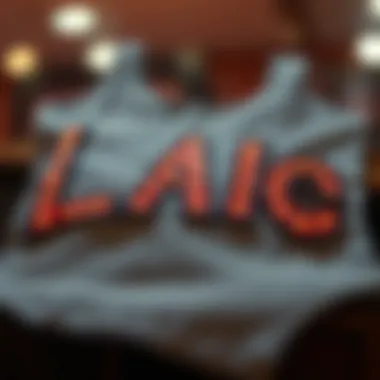

Themed Designs for Events
When it comes to special occasions, themed designs using letter iron-ons can amplify the event’s spirit. Whether it’s a birthday party, a wedding, or a corporate gathering, themed apparel can unify participants, enhancing the atmosphere. Each event holds unique demands, which means the designs must resonate with those involved.
Consider the following when designing for events:
- Theme Relevance: Designs should echo the event's spirit. A wedding might favor elegant script or floral motifs, while a birthday might benefit from vibrant colors and playful fonts.
- Team Cohesion: Coordinated designs can create a sense of belonging. Group uniforms featuring custom logos or slogans showcase unity among attendees.
- Practicality: While creativity takes the forefront, it should still consider comfort and wearability. Choose materials that are lightweight and allow freedom of movement, especially if the event stretches over several hours.
Highlighting the event's theme through carefully curated letter iron-ons underscores its significance, as well as provides lasting memories. A well-designed shirt, for instance, can serve as a memento long after the final dance or speech.
"Creativity requires the courage to let go of certainties." - Erich Fromm, a reminder that stepping beyond traditional boundaries leads to extraordinary designs.
Trends in Letter Iron-Ons
As we observe the landscape of fashion and personalization evolve, letter iron-ons have taken a spotlight in customization. This surge in popularity can be attributed to a number of factors that appeal to both consumers and retailers alike. Understanding this trend is crucial for anyone looking to leverage these embellishments in their wardrobe or business. It’s about more than just patches and letters; it’s a way to express identity, engage in current styles, and even make a statement.
Current Fashion Trends
Currently, letter iron-ons are intertwined with various fashion movements, making their mark in both casual and high-end markets. Brands that once relied on traditional embroidery and prints are now increasingly integrating iron-ons into their lines. The versatility of iron-ons allows designers to craft unique pieces that are not just on-trend but also affordable for consumers.
- Personalized Casual Wear: T-shirts and sweatshirts adorned with initials or custom phrases are climbing ranks in popularity. People appreciate the comfort of soft materials blended with their personal touch. Think about the high school or college students who want to showcase their initials or a club logo. This customization lets them stand out without breaking the bank.
- Streetwear Influence: The streetwear scene is fiercely embracing letter iron-ons. Labels like Off-White and Supreme utilize bold lettering to convey messages or express social commentary. This trend is not only about aesthetics; it’s about connecting with a younger audience that values innovation in fashion.
- Sustainable Fashion: Consumers are increasingly interested in sustainability. Many are turning to DIY projects to repurpose old clothing. Letter iron-ons allow them to refresh their wardrobe creatively. By refurbishing what they already own, they reduce waste while showcasing their individualized style.
Customization is not merely a trend; it's a reflection of our times. People are looking to wear their stories.
Celebrity Influence on Customization
In the realm of fashion, celebrities wield significant influence over trends. When famous figures adopt letter iron-ons in their wardrobe, the rest of the world takes notice. Notable examples include:
- Rihanna has been spotted in outfits featuring personalized patches, elevating the perception of iron-ons as chic rather than juvenile.
- Kanye West, with his YEEZY line, often includes elements that encourage fans to customize their pieces, further driving the point of individual expression.
- Emma Chamberlain, a social media star known for her unique style, shares her passion for DIY projects and how easy it is to use letter iron-ons to add flair to everyday outfits.
The endorsement of these figures helps normalize the use of letter iron-ons, helping break the stigma that they are only for children or those lacking style. Thus, it’s through such public endorsements that the realm of letter iron-ons continues to expand, making them not just a fashion statement, but a cultural phenomenon as well.
Comparing Letter Iron-Ons to Other Customization Methods
When it comes to personalizing clothing, letter iron-ons provide a unique blend of convenience and style, setting themselves apart from other customization methods. As fashion enthusiasts continuously search for creative ways to express themselves, understanding the distinctions among various techniques is essential. This section will highlight how letter iron-ons stack up against embroidery and screen printing, focusing on aspects such as cost, ease of application, and design versatility.
Embroidery vs. Iron-On
One of the first comparisons that comes to mind is between embroidery and letter iron-ons. Both methods have their merits, but they cater to different tastes and practical needs. Embroidery often reflects a more traditional aesthetic, emphasizing texture and durability. While it may exude a certain elegance, the labor-intensive nature of embroidery means it can hit the wallet fairly hard.
In contrast, letter iron-ons are not just user-friendly; they also allow for rapid application, making them a go-to for those looking for quick customization. The simplicity lies in their process—anyone with a household iron can create stunning designs without the need for specialized skills. Thus, the choice often boils down to:
- Cost: Letter iron-ons are typically more budget-friendly. The materials can be found at many local retailers or online, often at reasonable prices.
- Time: Iron-ons save a heap of time. Getting that trendy slogan on your tee is usually just a matter of heating and pressing.
- Appearance: Embroidery offers a more elevated finish, while iron-ons generally give off a more casual vibe—ideal for t-shirts, tote bags, and children's apparel.
Ultimately, if you cherish a polished finish and can spare the time and money, embroidery reigns. But, if you seek efficiency with eye-catching designs, letter iron-ons may be your best bet.
Screen Printing vs. Iron-On
Next, there’s screen printing, another popular method often favored for bulk orders. Screen printing creates vibrant images and intricate designs, but this method can be quite the production endeavor. It's a fantastic option for band merchandises or team uniforms but may not serve well for those aiming for one-off personalization.
Letter iron-ons shine in one-off applications. The process is straightforward and can be executed at home—saving both hassle and cost. Let's break down some attributes:
- Design Complexity: Screen printing excels with intricate graphics and a variety of colors, whereas iron-ons work better for simpler designs or lettering. Think a bold phrase versus a complex art piece.
- Scalability: For large batches, screen printing is cost-effective and efficient. If it’s personalized items you’re after, iron-ons can keep you nimble and creative without needing a printing press.
- Durability: Both methods have their upsides; however, screen prints can resist fading quite well under regular washing, whereas iron-ons may require diligent care to maintain their appearance over time.
All in all, the influence of usage is paramount. Whether for the modest DIY enthusiast or the established clothing brand, individuals must weigh their preferences and project goals carefully to best reach their desired outcome.
In the realm of clothing customization, understanding the nuances between letter iron-ons and other methods enables creators to choose wisely, paving the way for artistic freedom without the unnecessary complexities.
Navigating these comparisons allows both novice and seasoned stylists to tailor their approach to fit particular needs, enhancing their creative expression in the evolving fashion landscape.
Sourcing Letter Iron-Ons
Finding the right sources for letter iron-ons can mean the difference between a project that shines and one that flops. In today’s customization landscape, choices abound, and knowing where to look is crucial for achieving the best results. The importance of sourcing letter iron-ons goes beyond simply picking a supplier; it involves understanding quality, availability, and how these products fit into your creative vision while also keeping budget constraints in mind.
Online vs. Local Suppliers
When it comes to sourcing, one major decision is whether to go online or to visit local suppliers. Each option holds distinct advantages and some drawbacks.
Online Suppliers
- Wider Variety: Shopping online generally opens the gates to a broader selection. Websites such as Amazon or specialized craft stores often stock various styles and materials that might be difficult to find in a brick-and-mortar shop.
- Convenience: The ease of shopping from home with just a few clicks is a major perk. You can browse late night, in your pajamas, without worrying about store hours.
- Price Comparisons: It's often easier to compare prices online, ensuring you get the best bang for your buck.
However, one should be wary of:
- Quality Assurance: The material may not always meet your expectations as often you can't physical assess until it arrives.
- Shipping Costs: Sometimes, shipping fees can make a seemingly cheaper option considerably more expensive.
Local Suppliers
- Immediate Availability: Walking into a local store means you can pick up what you need right away. It eliminates the waiting time for shipping, which can be crucial if you’re on a tight deadline.
- Personal Interaction: Engaging with local retailers can offer insights into the best materials for your project. Their expertise can be invaluable, especially for newcomers.
- Support Local Business: Buying locally helps stimulate your community’s economy.
Nonetheless, local stores may limit you on
- Variety: Often, local shops carry a narrower selection, meaning you might not find exactly what you want.
- Pricing: Prices can be marked up in smaller stores compared to larger online platforms.
Ultimately, the choice between online or local suppliers is one of personal preference and project requirements. Assess your needs carefully before making a decision.
Quality Considerations
The quality of letter iron-ons can dramatically affect the final product. As such, discerning buyers must pay close attention to certain factors:
- Material Composition: Different materials perform uniquely. Vinyl may be durable but can lack some aesthetic appeal, while flock options have a softer look. Evaluate based on how you plan to use the iron-ons.
- Adhesive Quality: Check if the adhesive is robust enough to withstand washes. A product that peels off after a few washes is worse than no iron-on at all.
- Design Clarity: Consider how the design will hold up after application. A fuzzy or poorly cut letter won’t meet your standards.
- Brand Reputation: Research brands and read reviews. Fellow crafters often share which suppliers provide the best quality goods and which to avoid.
Maintaining a critical eye while sourcing can save you unnecessary headaches in the long run. Overall, understanding both the sourcing options and quality factors will empower you to make educated, cost-effective decisions that align perfectly with your customization ambitions.
Cost Analysis of Letter Iron-Ons
Understanding the financial implications of purchasing and applying letter iron-ons is crucial for those in the fashion and customization arenas. The cost analysis goes beyond surface-level pricing; it encapsulates aspects like material quality, longevity, and the overall value these iron-ons deliver to the end user. With a wide array of options available, evaluating costs presents an opportunity to make informed decisions that enhance creativity without breaking the bank. This section will delve into how prices vary, what influences these prices, and how buyers can gauge whether they are getting their money's worth when investing in letter iron-ons.
Comparative Pricing
When speaking of comparative pricing, it's about examining the range of costs associated with various types of letter iron-ons on the market. Prices can swing widely among different brands and materials, which can sometimes feel like navigating a minefield, especially for the uninitiated. Here are some factors that influence pricing:
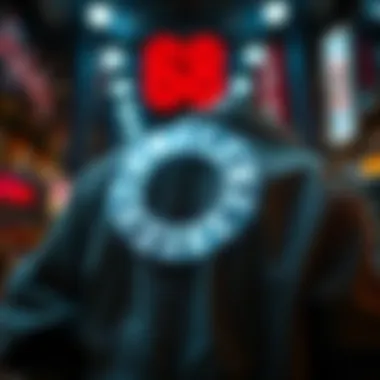

- Material Type: Vinyl or flock materials can come at different price points due to their manufacturing processes and durability.
- Brand Reputation: Well-known brands like Cricut or GLD might charge more, banking on their established quality and customer trust.
- Sizing and Scale: Larger letters or intricate designs might cost more compared to simple, smaller text.
- Customization Level: Personalized or bespoke designs can spike the overall price, reflecting the uniqueness offered to customers.
This diversity in pricing often requires consumers to perform a bit of research. Comparing multiple suppliers and conducting online price checks on sites like Etsy or specialized crafting stores not only helps in finding the best price but also in understanding what each brand offers at varying price points.
Value for Money Assessment
Conducting a value-for-money assessment involves scrutinizing not only the initial costs but also the long-term benefits associated with letter iron-ons. It’s a balancing act between what you pay initially and the utility you get down the line. Several considerations come into play here:
- Durability: A cheaper iron-on that falls apart after a few washes is less valuable than a pricier one that offers long-lasting adhesion and appearance.
- Versatility: Consider if a specific iron-on can be applied across different fabrics and scenarios. A product with versatility equates to more uses, thus improving its value.
- Aesthetic Appeal: Sometimes, the additional cost translates to better visual appeal and style, which can make all the difference in a customization project.
- User Experience: The ease of application and the tools required also play a part. An iron-on that’s easier to work with may save you time and hassle down the road.
Ultimately, assessing value goes hand in hand with understanding your specific needs. Reflecting upon how often you’ll use these iron-ons and for what purposes can help guide your purchasing decisions. For those in fashion, this assessment not only affects costs but also influences their brand's overall aesthetic and customer satisfaction.
"Value is often subjective, and what seems like a splurge to one might be considered a wise investment by another."
By taking a deeper look at these factors, fashion enthusiasts and retailers alike can navigate the cost landscape of letter iron-ons with greater confidence, ensuring they make savvy choices that align with their creativity and budget.
Environmental Considerations
As consumers become more conscientious of their environmental impact, the significance of environmental considerations in the realm of letter iron-ons cannot be overstated. This section sheds light on the implications of material choices and production methods pivotal to this customization trend. By understanding these elements, fashion enthusiasts and retailers alike can make informed decisions that align with sustainability goals while also catering to consumer preferences.
Sustainability of Materials
Sustainability in materials encompasses the use of eco-friendly substances that minimize harm to the environment. When selecting letter iron-ons, it’s essential to consider the origins of the materials used. For instance, opting for products made from organic cotton or recycled polyester not only reduces waste but also lessens the reliance on conventional materials that contribute to pollution and environmental degradation.
Fashion statements no longer revolve solely around aesthetic value; they have evolved to include ethical and ecological dimensions. As such, many brands are now integrating sustainable practices into their production processes. This creates a win-win situation: consumers get high-quality, fashionable products while supporting sustainable practices. Indeed, incorporating sustainable materials can enhance the appeal of a brand in a highly competitive market.
"Choosing eco-friendly materials not only reflects a brand's commitment to sustainability but also resonates with a growing consumer base that values responsible fashion choices."
Moreover, consumers should be aware of certifications like GOTS (Global Organic Textile Standard) that ensure textiles meet stringent environmental standards. By prioritizing these certified iron-ons, fashion enthusiasts can substantiate their commitment to sustainability. Understanding the materials used in iron-ons can empower consumers to make choices that benefit both their wardrobe and the planet.
Ethical Production Practices
The ethical production practices associated with letter iron-ons involve scrutinizing the entire life cycle of these products—from sourcing raw materials to manufacturing and distribution. Ethical practices are vital as they ensure that workers involved in the production process are treated fairly and compensated justly. The garment industry has often been criticized for exploiting labor in developing countries, leading to calls for more transparency and ethical accountability.
In recent years, many manufacturers have begun prioritizing fair trade practices. By ensuring that workers receive fair wages and work under safe and humane conditions, these companies are pushing against the tides of unethical production. Brands that opt for ethically produced iron-ons often communicate these values prominently, appealing to consumers' growing desire to shop responsibly.
Fashion enthusiasts and retailers can support these practices by selecting suppliers who comply with ethical standards and actively avoid companies involved in exploitative practices. Not only does this bolster the brand's image, but it also contributes to a more sustainable fashion ecosystem, encouraging other brands to join in the movement towards responsibility.
By merging sustainability and ethical production practices, the letter iron-on industry can align itself with the burgeoning demands of today’s conscientious consumers.
To delve deeper into ethical production and sustainable practices in fashion, resources like Textile Exchange and Fair Trade International provide extensive insights.
Innovations in Letter Iron-On Technology
In the rapidly evolving world of fashion customization, innovations in letter iron-on technology have taken center stage. These advancements not only streamline the application process but also expand the possibilities for creativity and personal expression. With consumers seeking unique ways to showcase their individuality, staying abreast of such innovations becomes paramount for fashion enthusiasts, stylists, and retailers alike.
Advancements in Adhesive Technology
One area where significant progress has been made is in adhesive technology. Traditional iron-on transfers often used basic adhesives that could fail or peel over time, especially after repeated washes. Newer adhesives are designed to withstand the rigors of everyday wear, offering improved bonding strength and flexibility.
- Heat-Activated Adhesives: Modern letter iron-ons commonly incorporate heat-activated adhesives that fuse the letters not just to the fabric, but into it. This leads to a more durable bond that can significantly extend the lifespan of the customization.
- Eco-Friendly Options: In light of increasing environmental awareness, there's a growing market for sustainable adhesive solutions. These offer not only performance but also peace of mind for eco-conscious consumers.
- Flexible Adhesives: Also, these adhesives can stretch and move with the fabric, preventing cracking or peeling when the garment is put to regular use.
With these advancements, it becomes crucial for users to understand compatibility with various fabrics to avoid unpleasant surprises. Choosing the right adhesive contributes largely to the overall success and longevity of the iron-on application, demonstrating that when consumers invest in quality, it truly pays off in the long run.
Digital Printing Methods
The introduction of digital printing methods has revolutionized the way letter iron-ons are produced. Unlike traditional methods that often face limitations in complexity and color vibrancy, digital printing allows for a nearly infinite range of designs and a more intricate level of personalization.
- High Resolution: Digital printing offers a high resolution that captures even the slightest details of a design, ensuring that iron-ons not only look good but also reflect the user's aesthetic desires.
- Color Variety: Users can explore a broader palette with accurate color reproduction, allowing for stunning combinations that were previously difficult to achieve.
- Custom Orders: Retailers and consumers are increasingly favoring custom orders, fueled by digital printing capabilities. This means more people can create items that reflect their personal stories, beliefs, or affiliations without the constraints of traditional production methods.
Additionally, digital printing helps in inventory management. Retailers can produce items on-demand, reducing waste and sidestepping the common pitfalls of overproduction. It also offers flexibility in design changes without incurring significant costs. As the technology continues to progress, consumers can expect even more enhancements in customization, leading to ever-evolving fashion statements.
"The future of fashion customization is here, and it’s driven by technology that makes personal expression more accessible and varied than ever before."
Case Studies
Exploring the realm of letter iron-ons becomes significantly more illuminating when one delves into real-world applications. Case studies offer a window into how brands and consumers harness these tools to express creativity, enhance business identities, and foster community connections. By analyzing the success stories and challenges of notable implementations, we gain valuable insights that can inspire both personal and professional endeavors.
Successful Brand Implementations
When a brand opts to incorporate letter iron-ons into their marketing strategy, they aren’t just slapping on letters to their garments. They are telling a story, building a brand identity. For instance, Nike, a giant in the athletic wear industry, has expertly utilized customizable letter iron-ons in their promotional campaigns, allowing customers to personalize their shoes. This strategy not only adds a personal touch but also fosters consumer loyalty. People feel connected to a product they helped design, and this emotional tie can result in not just a single purchase, but a long-term relationship with the brand.
Another example is Levi's, known for its classic denim. They've embraced letter iron-ons to allow customers to express individuality. By frequently collaborating with street artists and influencers to create exclusive designs, they keep the product fresh and appealing. This collaboration not only enhances brand visibility but also allows the consumer to feel as if they are part of a larger narrative.
- Benefits of Successful Implementations:
- Enhanced customer engagement and personalization.
- Strengthened brand identity and differentiation in a crowded market.
- Increased sales through unique product offerings.
Consumer Experiences
Understanding the consumer perspective is essential for grasping the impact of letter iron-ons. Many individuals perceive these iron-ons as a medium of self-expression. A family might choose letter iron-ons for a reunion, embroidering their last name on matching shirts. This simple act creates a sense of unity and belonging among family members. Others might use letter iron-ons to transform a plain hoodie into a canvas of personal expression, spelling out motivational quotes or favorite song lyrics.
However, it’s crucial to note that not all experiences are positive. A frequent complaint involves poor quality of letter iron-ons, which can lead to peeling or fading after washing. Such experiences often drive consumers to share feedback online, impacting brand reputation. This highlights the importance of quality control in the production process. A brand that listens to its consumers and adapts their products accordingly can foster positive experiences, thereby building trust and loyalty.
"Personalization in clothing isn’t just a trend; it symbolizes individuality in a world that often promotes conformity.”
Moreover, online platforms like Reddit show countless anecdotes of consumers sharing their successes and missteps with letter iron-ons. These interactions not only offer insight but also build a community around those who appreciate the art of personalization in fashion. In fact, various forums and discussion groups exist solely for sharing experiences, tips, and best practices for achieving the best results with letter iron-ons.
In summary, exploring the case studies surrounding letter iron-ons can offer profound insights into both consumer behavior and branding strategies. By examining successes as well as challenges, we can glean lessons that are invaluable for anyone looking to thrive in the custom fashion landscape.
Future of Letter Iron-Ons
The significance of exploring the future of letter iron-ons lies in the intersection of creativity and technology, shaping how individuals engage with fashion. Given that customization is no longer a niche market but a widely accepted practice, understanding the anticipated trajectories of letter iron-ons can inform producers and consumers alike. Moreover, this future perspective reveals potential growth areas, alternate materials, and innovative applications that could redefine personal branding.
Predictions for Market Trends
As we gaze into the crystal ball of fashion customization, a few key predictions emerge:
- Increased Demand: There’s a clear surge in demand for personalized clothing. Iron-ons are at a crossroads, merging fashion statements with individual expression. This trajectory is expected to continue growing as consumers seek out ways to showcase their identity.
- Sustainability Focus: Environmental awareness among consumers is on the rise. Future trends may inclde a shift toward eco-friendly materials for letter iron-ons, emphasizing biodegradable vinyls or organic cotton. Brands that take this change seriously stand to gain a loyal customer base.
- Technology Integration: Innovations in digital printing will likely play a pivotal role. With advancements in printing technology, consumers might soon be able to design their letters using an app, sending them directly to home printers or local fabric shops. Instant customization could become the norm.
"The future belongs to those who believe in the beauty of their dreams." — Eleanor Roosevelt
This quote resonates deeply within the context of fashion customization, underlining the connection between personal expression and the evolving landscape of letter iron-ons.
Evolving Consumer Preferences
As fashion continues to evolve, so too do the preferences of its consumers.
- Personalization Over Brand Names: A notable shift is observed; consumers increasingly favor unique, personalized items over generic branded ones. Individuals want their clothing to tell their unique story rather than fit a one-size-fits-all model. This desire directly influences the popularity of letter iron-ons.
- Social Media Influence: Driven by platforms such as Instagram and Pinterest, where visual appeal reigns supreme, there’s an authentic push toward customization. Consumers seek out letter iron-ons to ensure their attire stands out in crowded feeds, creating a sense of individuality.
- Practicality Meets Aesthetics: Consumers are also becoming more discerning about practicality. They want products that not only look good but also withstand the wear and tear of regular use. Innovations in materials that enhance durability without sacrificing style will capture attention in this domain.
In summary, the future of letter iron-ons is anchored in a blend of tailored experience and sustainable growth. As trends unfold, both producers and consumers alike must stay attuned to these nuances to navigate the ever-dynamic world of fashion effectively.
